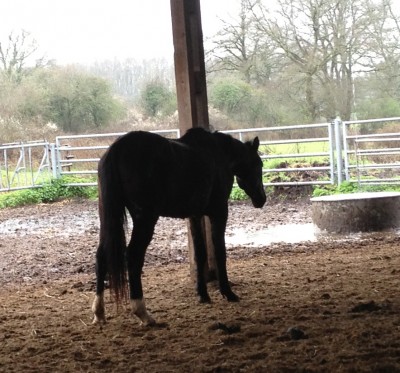Buying a Dead Horse
Posted by on Sep 16, 2016 in Association News | 0 comments
Sounds like nonsense? If only.
When a horse is registered as a foal, that’s the passport he or she supposedly carries for life. There is no nod to future height, weight or build (rightly so), identification is based on the colour, markings (stars, socks, whorls etc) on the horse, and the microchip in the horse. What most horse owners don’t realise is that passports are not in place to protect the horse, or safeguard ownership. The equine passport exists solely for traceability, to ensure that no equine having been in receipt of medication ends up sent to slaughter for human consumption. Every equine passport has a section for taking the horse out of the food chain. If signed, there is no need for the vet to record every/any treatment the horse then receives. Many owners sign this part just to prevent their horses going to slaughter, whether or not they are medication free. If a vet administers any medication (such as bute) to a horse still eligible for slaughter, the vet must sign the relevant section pages ensuring the horse is immediately out of the food chain. The horse can no longer legitimately be sent to slaughter as food, and even if somehow the horse still ends up at the abattoir, the vets present should be checking every passport, against every horse, determining a match to ensure food safety.
All good and well in the ideal world – here’s a selection of the thorny issues facing horses in the real world.
- It’s really easy to just tear out those section papers
- Horses are not necessarily scanned for chips at the abattoir
- Chips can be magnetically/surgically ‘disappeared’
- One bay/grey/chestnut horse with no markings looks very much like another bay/grey/chestnut with no markings
- Abattoirs are not legally obliged to return passports to the issuing PIO
- Mainland Europe abattoirs have no obligation to UK PIO legislation
Lets take a look at the commerce, because ultimately that’s all an abattoir is, an exchange of horse for money. There’s not a lot of deadweight on a small horse, the (very) approximate rule of thumb is 66% of the live weight. I’ll use French abattoir figures to illustrate, due to no reliable source for UK figures (UK abattoirs are shy to mention the horses they process due to the sentiment in the UK). The price per deadweight averages 2.30€ a kilo, hence a small horse weighing 350 kg will yield 233kg returning 535€, and a large horse weighing 600 kg will yield 400kg returning 920€. A difference of 385€ per lorry space soon adds to the coffers.
The slaughter arena is ripe for the picking by the unscrupulous dodgepot dealers and transporters because nobody cares about these horses. Few broadcast the side of their business involving abattoir bound equines, especially those shipping to mainland Europe.
Here’s how it works. A small, 350kg, plain, bay mare, called Mary, has a clean passport and is not signed out of the food chain. She is in a transporter/dealer’s yard to go to slaughter. The transporter/dealer also has a large, 600kg, plain, bay mare, called Lizzie, with issues that make her worthless as a riding horse or broodmare (maybe she was even advertised as a companion). Lizzie’s passport is signed as her being unfit for human consumption, so cannot be processed for meat. Lizzie goes to slaughter on Mary’s clean passport. The transporter/dealer has now made money on a horse that previously had zero value. Not only that, he still has Mary who can be processed or sold on once a new passport is issued, because Mary can now be anything that makes her more attractive to buyers.
Many of the PIOs (other than Weatherbys) don’t bother checking the chip numbers when they issue passports. As there is no National database – how would they find the necessary info anyway? Owners can never rest secure in believing that because horses are signed out of the food chain, they will never be slaughtered when sold on.
I’ve written this article, because recently in one location, I’ve discovered a horse registered as dead still alive, and another with linear scarring where a chip would have been. I know of several instances where people have bought TB horses, and in tracing their history with Weatherbys the horse is listed as dead. Weatherbys is the only studbook in the UK with proper traceability, and as TBs make up roughly 12% of the UK equine population, it’s not rocket science to realise this is a widespread issue far out with the TB industry.
The UK desperately needs to wake up to the need for a central database governing equine identification, and to set up properly monitored abattoirs nationwide for horses. That would go a long way to prevent the shipping abroad to slaughter, and to try and ensure that traceability is in place.

